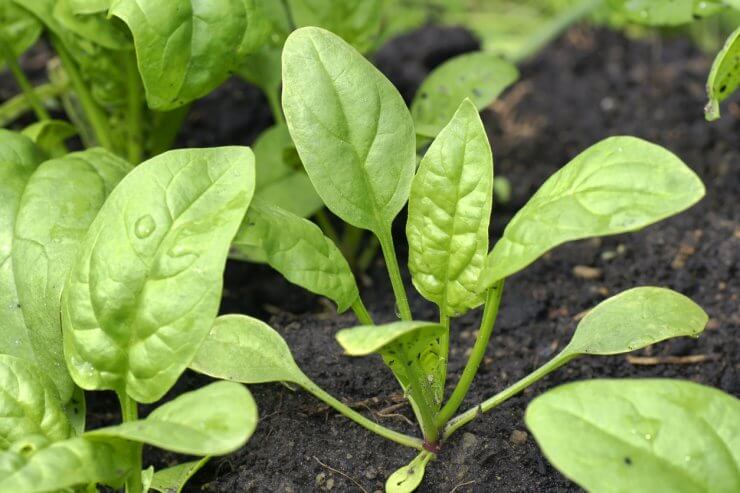
If you love gardening but find the constant toil of tilling, weeding and digging a hassle, no-dig gardening might be the solution you’ve been looking for. This method promotes healthy soil, reduces labor and yields abundant harvests — while preserving the delicate balance of nature in your garden.
What Is No-Dig Gardening?
At its core, no-dig gardening is a method that avoids disturbing the soil by tilling or digging. Instead, gardeners build up layers of organic materials, like compost, mulch and leaves, directly on the soil surface. These materials break down naturally, enriching the soil and providing plant nutrients.
Discover 7 top tips for growing, harvesting, and enjoying tomatoes from your home garden—when you access the FREE guide The Best Way to Grow Tomatoes, right now!
The Benefits of No-Dig Gardening
No-dig gardening offers numerous advantages, making it an appealing choice for gardeners seeking to improve soil health and reduce maintenance:
- Preserved soil structure: No-dig gardening keeps the soil intact, promoting a healthier, more balanced environment for plant roots. This undisturbed soil structure supports the growth of beneficial organisms and ensures that plant roots can easily access essential nutrients and water.
- Enhanced microbial activity: Undisturbed soil promotes microbes, improving nutrient cycling and disease resistance. These healthy microorganisms break down organic matter, releasing vital nutrients and supporting the plant’s immune system.
- Reduced soil erosion: Organic layers protect the soil and prevent erosion by allowing water to penetrate more effectively. This is especially beneficial for maintaining soil integrity during heavy rainfall or drought conditions.
- Fewer weeds: A thick layer of organic material blocks weeds from sprouting, reducing the time spent weeding. This natural weed control method prevents weed seeds from germinating, allowing plants to thrive without competition.
- Less labor-intensive: With fewer weeds and less need for tilling, no-dig gardening reduces the amount of physical labor needed to maintain your garden, making it an ideal choice for gardeners looking to simplify their tasks.
- Ideal for high-value crops: Crops like saffron, which can generate up to $30,000 per acre, thrive with no-dig gardening. This method preserves soil structure, keeping it well-drained and nutrient-rich, creating ideal conditions for saffron to grow and deliver consistent, high-value harvests.
The Science of Soil Health
Soil is a living organism in itself. Beneath the surface, you’ll find billions of microorganisms — bacteria, fungi and insects — that work together to break down organic matter and recycle nutrients. The no-dig method preserves this underground ecosystem by allowing natural processes to unfold without interference. This makes the soil more resilient and better equipped to support plant life over the long term.
How to Start a No-Dig Garden
Starting a no-dig garden is simple, even for beginners. The most important part is building the right layers of organic material on top of your existing soil. Here’s a step-by-step guide:
- Prepare the site: Choose a spot in your garden with good sunlight and clear it of any weeds or grass.
- Lay down a weed barrier: Cover the area with a layer of cardboard or newspaper to smother any remaining weeds.
- Build the layers: Start layering organic materials like compost, straw, leaves and well-rotted manure.
- Water thoroughly: After layering, water the bed to help the materials break down.
- Plant directly into the soil: Once the bed is set up, you can plant directly into the layers of organic matter. Over time, these layers will decompose, enriching the soil below.
Common Mistakes to Avoid in No-Dig Gardening
While no-dig gardening is easy to start, avoiding these common pitfalls hindering your garden’s success is important:
- Using fresh, uncomposted organic matter: Raw materials like grass clippings or fresh chicken manure can be too rich in nitrogen, which may damage plant roots. It’s essential to fully compost these materials, allowing excess nitrogen to dissipate, before adding them to your garden for safe and effective use.
- Not adding enough organic matter: You need a lot of organic material to build healthy soil. If your layers are too thin, they won’t break down properly.
- Ignoring soil pH: Even though no-dig gardening improves many aspects of soil health, it’s still important to test the pH of your soil and adjust it as needed for optimal plant growth.
How No-Dig Gardening Contributes to Sustainability
In addition to the personal benefits of an easier, healthier garden, no-dig gardening also plays a significant role in environmental sustainability:
- It reduces carbon footprint: No-dig gardening reduces the need for machinery contributing to carbon emissions. Additionally, healthier soil helps store carbon, mitigating some effects of climate change.
- It promotes biodiversity: By leaving the soil undisturbed, no-dig gardening creates a more diverse habitat for beneficial insects, birds and other wildlife.
- It conserves water: With improved water retention, no-dig gardens need less irrigation, saving water resources and reducing your environmental impact.
Is No-Dig Gardening Right for You?
No-dig gardening could be the perfect solution if you’re looking for an easier, more sustainable way to garden. It’s a simple yet effective method that requires less physical labor, reduces your environmental footprint and yields healthier plants. By preserving the natural soil structure and enhancing its fertility, you’ll be rewarded with a productive garden that continues to improve over time. Give it a try and see for yourself — the less work, the more yield!
Discover 7 top tips for growing, harvesting, and enjoying tomatoes from your home garden—when you access the FREE guide The Best Way to Grow Tomatoes, right now!




